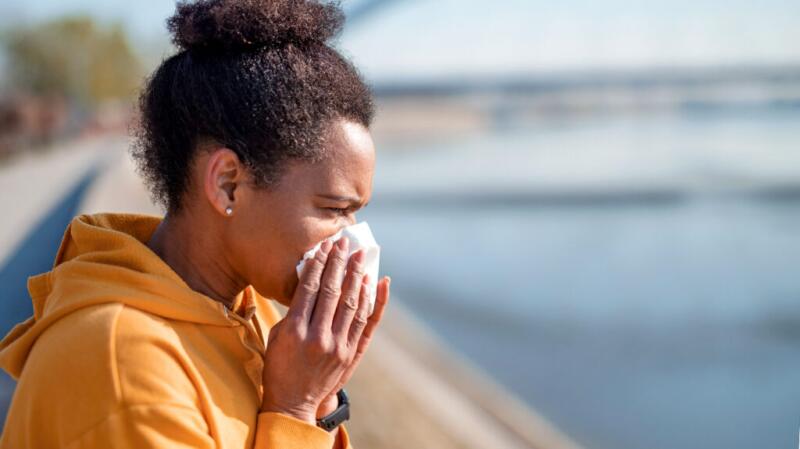
Green phlegm typically means your body has contracted an infection, such as a bacterial infection. It also commonly occurs in people with cystic fibrosis (CF).
Common cold
A cold is one of the most common viral infections a person can get. It is a frequent reason people miss work or school, according to the
Most people will experience a cold at some point in their life. Colds can pass from person to person through contact or through respiratory droplets in the air.
Symptoms of a cold include:
- sneezing
- runny nose
- stuffy nose
- coughing
- sore throat
- mucus dripping down your throat, which can cause you to cough up green phlegm
- watery eyes
- fever, though this is not as common of a symptom
Ways to prevent a cold or chest infection
- Wash your hands regularly.
- Avoid contact with anyone who has a cold or infection.
- Avoid touching your eyes, nose, and mouth with unwashed hands.
- Stop smoking, if you currently smoke, and avoid secondhand smoke.
- Eat a healthy and balanced diet.
Learn more about the common cold.
Bronchiectasis
Bronchiectasis is a long-term condition. It causes the airways of your lungs to widen, which leads to a buildup of mucus.
The symptoms of bronchiectasis can vary in severity from person to person. The most common symptom is a cough that brings up mucus or phlegm on a regular basis. This phlegm is typically greenish-yellow, yellow, or clear.
Other symptoms include:
- wheezing
- shortness of breath
- chest pain
- joint pain
- coughing up blood or blood-stained phlegm
- clubbing of the fingers, which is when the tissue under your nails thickens and causes the tips of your fingers to become round or bulbous
Bronchiectasis can lead to a chest infection.
If you develop an infection, you may notice that you begin coughing up more phlegm. This phlegm may become greener than it was or may develop an unpleasant smell. You may also feel your shortness of breath worsen.
Learn more about bronchiectasis.
Pneumonia
Pneumonia is an inflammation of the tissue on your lungs. This can occur in one or both lungs. It typically results from a virus or bacterial infection.
Symptoms of pneumonia include:
- a cough, which may be dry or produce green, yellow, brown, or blood-stained phlegm
- difficulty breathing
- rapid heartbeat
- feeling generally unwell
- shivering or sweating
- fever
- loss of appetite
- chest pain
These symptoms can come on suddenly over 24 to 48 hours. They can also come on more gradually over several days.
Contact a medical professional if you are experiencing symptoms of pneumonia.
Chest infection
A chest infection is an infection in the lungs. Bronchitis and pneumonia are types of chest infections. These infections can spread through respiratory droplets released into the air when someone coughs or sneezes.
Symptoms of a chest infection include:
- a cough that happens with or without green, yellow, or brown phlegm
- breathlessness
- fever
- rapid heartbeat
- aches and pains throughout your body
- pain or tightness in your chest
- feeling unwell
- feeling more tired than usual
Cystic fibrosis
CF is a genetic condition. It results from a faulty protein that affects the gland, tissues, and cells that produce sweat and mucus, according to the National Heart, Lung, and Blood Institute.
Symptoms of CF vary from person to person. Some people with CF may not experience any symptoms. Others may experience symptoms that are severe enough to be life threatening.
Since CF affects the lungs, common symptoms are wheezing or a cough that produces phlegm. Other CF symptoms include:
- intestinal blockage
- clubbing of fingers or toes
- abdominal pain, constipation, or diarrhea
- fever
- low body mass or being underweight
- jaundice
- pain in your joints or muscles
- salty skin
- sinus infections
- delayed growth or puberty
Learn more about cystic fibrosis.
Bronchitis
Bronchitis is a condition that causes the airways in your lungs to become inflamed. This typically causes coughing that produces phlegm.
Bronchitis is generally either a short-term (acute) condition or a long-term (chronic) condition.
The most common symptom is a cough with phlegm or mucus. Other symptoms include:
- low grade fever
- chest pain
- wheezing
- shortness of breath
“Phlegm” is the term that refers to mucus that you cough up from your lungs. It is also known as sputum.
Typically, phlegm is an atypical production of the mucus made by the cells in your upper airways and lungs, according to the National Cancer Institute.
Mucus is a jelly-like substance that is found throughout your body. It helps to protect you from infection. Your body produces mucus in areas like your:
- gastrointestinal (GI) tract
- mouth
- nose
- throat
- lungs
Clear mucus is typical. However, the color of your mucus or phlegm can tell you a lot about what is happening in your body. Green phlegm typically means your body is developing an infection.
Usually, you do not need to feel alarmed about green phlegm. Yet, in certain situations, you may want to contact your doctor.
These situations include when:
- You are experiencing shortness of breath.
- You experience pain when breathing.
- You have a high fever.
- You are coughing up a large amount of phlegm.
- You are coughing up phlegm with blood.
- Your symptoms do not improve or they worsen.
- You have a heart or lung disease, like asthma or heart failure.
Treatment will depend on the underlying cause of the green phlegm. Some infections may require treatment with antibiotics.
Chronic conditions like CF typically require a combination of treatments. This usually includes airway clearance techniques and medications.
For conditions that do not require medical treatment, like the common cold, you can try some strategies at home to feel better.
Ways to treat a cold or infection at home
- Get plenty of rest.
- Drink plenty of fluids.
- Take over-the-counter medications for colds or to loosen mucus.
- Take nonsteroidal anti-inflammatory drugs (NSAIDs), like ibuprofen or acetaminophen.
- Use a humidifier.
- Breathe in steam from a bowl of hot water or the shower.
- Use lozenges.
- Drink tea or hot water with honey.
If your doctor feels you require antibiotics for an infection, always take the entire dose as instructed, even if you begin to feel better.
Phlegm is mucus that you cough up from your lungs. The color of your phlegm can tell you about certain things that are happening within your body.
Green phlegm typically means you are developing an infection. It may be due to a common cold, pneumonia, or bronchitis.
Often, you do not need to feel concerned about green phlegm. Getting lots of rest and drinking plenty of fluids can clear the symptoms over time.
Sometimes, though, you may require antibiotics to treat the infection. Contact your doctor if your symptoms do not clear or if they worsen.
Contact a medical professional right away if you have difficulty breathing, have a high fever, or are coughing up large amounts of phlegm.







